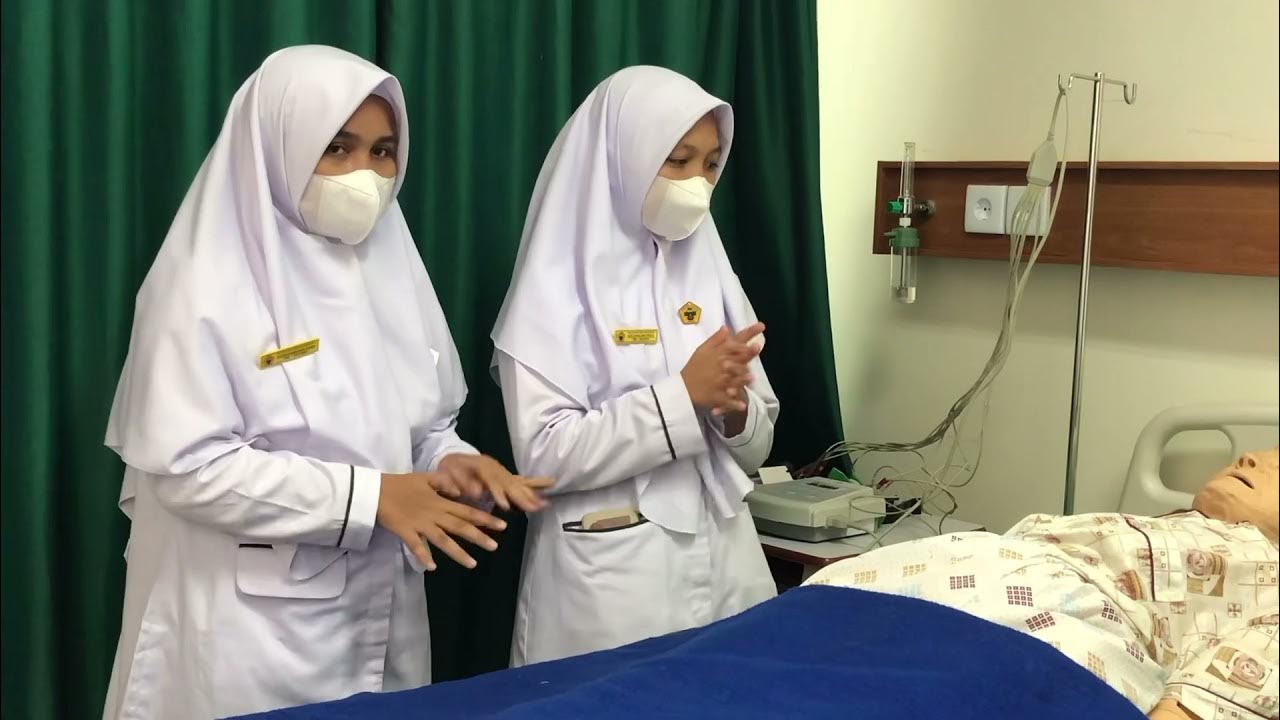Pemeriksaan Fisik Ibu Nifas
Summary
TLDRThe video script details a post-natal care check-up performed by Yulia, a midwife. The procedure includes a thorough physical examination of a new mother, covering vital signs, head and neck, breasts, extremities, and abdomen. Yulia ensures no signs of complications such as swelling or infection, checks the mother’s uterine contraction, and provides guidance on post-delivery care. She advises the mother on practices like proper hygiene, monitoring bleeding, and breastfeeding techniques. The video emphasizes the importance of following these instructions for a safe recovery and healthy postpartum period.
Takeaways
- 😀 The midwife begins the post-natal care examination by checking the mother’s vital signs, including temperature, blood pressure, heart rate, and respiratory rate.
- 😀 Physical examination of the mother is conducted from head to toe, including assessing the condition of the head, face, neck, and breasts.
- 😀 The midwife checks for any abnormalities in the mother’s face, ensuring there are no signs of edema or swelling.
- 😀 The midwife examines the breasts to ensure there are no lumps, cracks, or signs of infection, and that both breasts are symmetrical.
- 😀 Hands and extremities are checked for any swelling (edema), color changes, or abnormal nail conditions, ensuring the mother is in good overall condition.
- 😀 The midwife inspects the abdomen to check for any surgical scars or issues, particularly examining the fundus uteri and its contraction.
- 😀 The lower extremities are assessed for signs of swelling, varicose veins, or pain in the calves, which can indicate complications like blood clots.
- 😀 Post-examination instructions focus on the importance of maintaining good hygiene, including frequent hand washing and regular bathing.
- 😀 Mothers are advised on how to monitor for abnormal bleeding and uterine contractions, as well as signs of complications that may require further attention.
- 😀 Breastfeeding is encouraged, with specific instructions on how to keep the breasts clean and avoid obstructions that could affect milk flow.
- 😀 The midwife concludes the session by ensuring the mother understands the aftercare instructions and addresses any questions or concerns the mother may have.
Q & A
What is the purpose of the post-natal examination in the script?
-The purpose of the post-natal examination is to check the mother's overall health, monitor vital signs, and assess specific areas of the body such as the breasts, abdomen, and extremities to ensure proper recovery after childbirth.
What equipment does the healthcare provider use for the post-natal examination?
-The healthcare provider uses a stethoscope, thermometer, chlorinated solution, gauze, cotton, and a basin, among other items to conduct the examination.
How are the mother's vital signs checked during the examination?
-The mother's vital signs are checked by measuring her temperature, blood pressure, pulse rate, and respiratory rate. The healthcare provider uses a thermometer for temperature, a blood pressure cuff for BP, and manually checks the pulse and respiratory rate.
What is the significance of the examination of the head, neck, and face?
-The examination of the head, neck, and face is important to check for any signs of swelling, anemia, or infection. It also ensures that the eyes and skin are normal, with no abnormal discoloration or symptoms of illness.
What does the healthcare provider check during the breast examination?
-The healthcare provider checks the breasts for lumps, symmetry, and any abnormal changes such as retraction. She also ensures that the nipples are clean and free from lesions or irritation, which is important for successful breastfeeding.
What is assessed in the examination of the extremities and legs?
-The extremities and legs are assessed for swelling (edema), discoloration (such as paleness or jaundice), and the presence of varicose veins. The healthcare provider also checks the feet and nails for any abnormalities.
Why is the abdomen checked during the post-natal examination?
-The abdomen is checked to ensure that there are no surgical scars or complications from childbirth. The healthcare provider also measures the height of the uterus to ensure it is contracting properly and checks for any abnormal masses in the abdominal area.
What advice does the healthcare provider give about personal hygiene after childbirth?
-The provider advises the patient to maintain good personal hygiene by bathing twice a day and regularly changing sanitary pads to avoid infection. She also emphasizes cleaning the genital area properly after urination or defecation.
What care is recommended for the breasts during the post-natal period?
-The healthcare provider recommends that the mother maintain breast hygiene, especially cleaning the nipples regularly, to prevent any infections or blockages that could interfere with breastfeeding.
What are the key signs of uterine contractions that the mother should monitor after childbirth?
-The mother should monitor uterine contractions by checking if the uterus feels hard (which is normal) or soft (which could indicate complications). Regular contractions help to prevent excessive bleeding and support recovery.
Outlines

This section is available to paid users only. Please upgrade to access this part.
Upgrade NowMindmap

This section is available to paid users only. Please upgrade to access this part.
Upgrade NowKeywords

This section is available to paid users only. Please upgrade to access this part.
Upgrade NowHighlights

This section is available to paid users only. Please upgrade to access this part.
Upgrade NowTranscripts

This section is available to paid users only. Please upgrade to access this part.
Upgrade NowBrowse More Related Video

Pregnancy Check || Antenatal Care

Asuhan sayang ibu pada kala IV I kelompok 8 I mata kuliah Asuhan Kebidanan pada Persalinan dan BBL

SOP Pemeriksaan Fisik Kardiovaskular (jantung)

STIKes English for midwife pertemuan 7 (Collecting Subjective data and counseling )

BED SIDE TEACHING KEBIDANAN

What is the role of the midwife?
5.0 / 5 (0 votes)